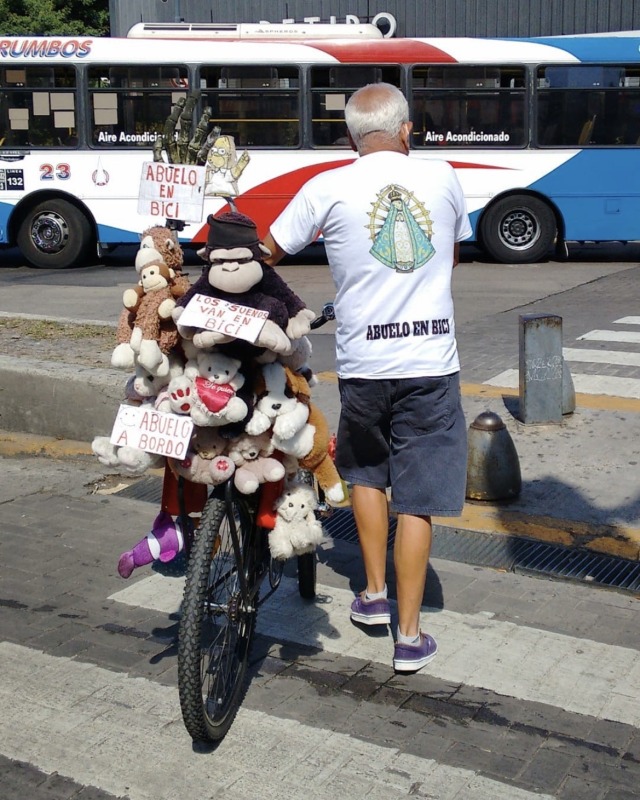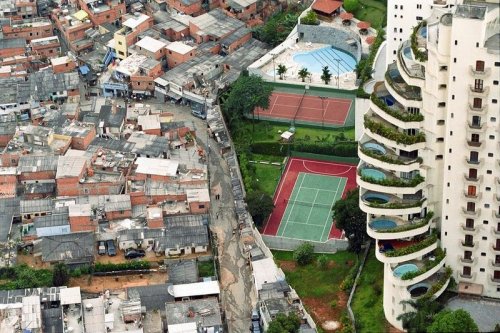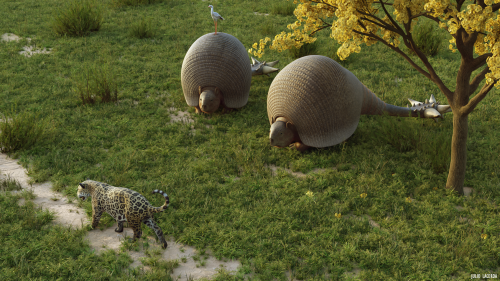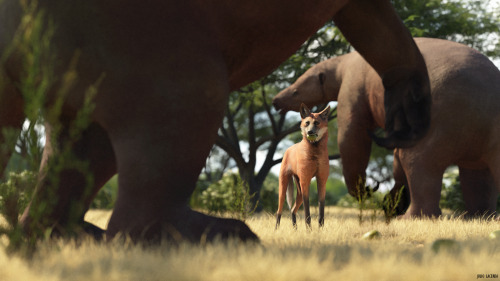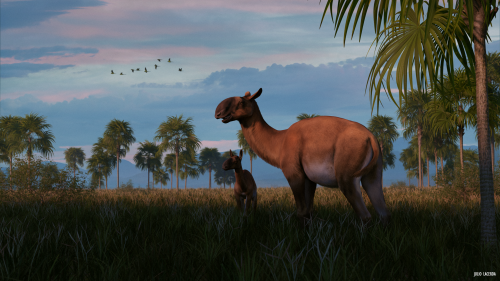#south america


Tierra de Colores. Patagonia, Argentina. Gabo Franco






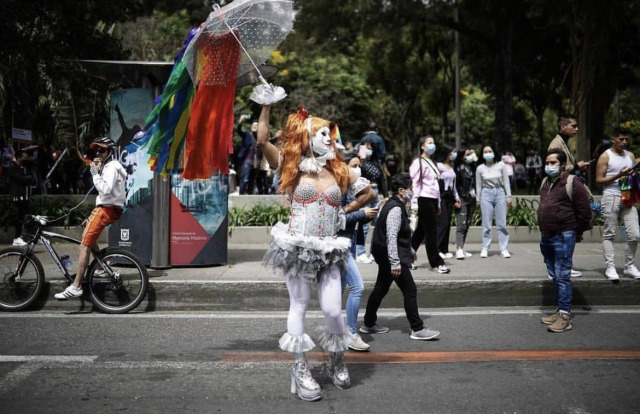
Pride Parade in Bogota, Colombia. Ivan Valencia/AP News.




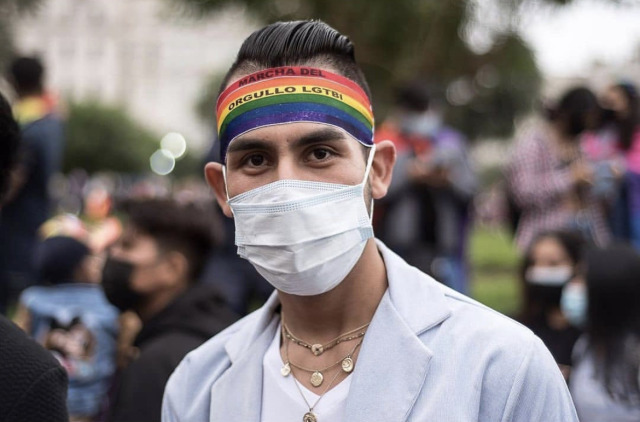


Pride March in Lima, Peru amidst the country’s mass protests following the presidential election to demand respect for the democratic process. Source


rioplatenses… this one is for u <3
Marmosets are New World monkeys, which means they have prehensile tails and are dichromatic (they see only two colors). Old World monkeys like chimps, gorillas, and orangutans are trichromatic and can see in “full” color like humans. Marmosets live in the upper tree canopies of South American rainforests and eat insects, fruit, and leaves. Their long lower incisors help them chew holes in tree trunks to access carbohydrate-rich tree sap. Marmosets lives in large family groups and females commonly give birth to fraternal twins.
Post link
Though you may have seen these rabbit-mouse furballs at your local Petco, chinchillas are originally from the Andes mountains in South America. Chinchillas are hypoallergenic and they take dust baths to clean their fur (a wet chinchilla must be dried immediately with towels because their dense fur prevents air-drying and therefore makes them susceptible to fungal infections). They can jump up to 6ft and require extensive exercise in captivity.
Post link
No essay or magazine article in the world can convey the stark divide between the extreme rich and the extreme poor as this photo does - taken of the Paraospolis Favela and Sao Paulo, Brazil. The photo is one of a series of amazing images showcased here on the deputydog blog.Source:hyperempowered
This shows the social relationship of economy in space. It is the physical and visual representation of how we are divided into different classes; working class, middle class and upper class. It is the line of poverty (left) against wealth (right). Is this how our space should be used? Or should space be more integrated? Should space be defined by our income and working situations?
Post link
With the Torre DavidinstallationUrban-Think Tank won the Golden Lion at the 2012 Venice Biennale of Architecture. After a few years of screening at festivals, schools, exhibitions, and a few news broadcasts around the world, the short film telling the story of Torre David it’s now publicly available.
Centro Financiero Confinanzas, also known as Torre de David(theTower of David), is an unfinished skyscraperinCaracas, the capital of Venezuela. It is the third highest skyscraper in the country after the twin towers of Parque Central Complex. The construction of the tower began in 1990 but was halted in 1994 due to the Venezuelan banking crisis. As of 2016, the building remains incomplete and unused. […]
Alfredo Brillembourg, relative of the late David Brillembourg who was a main investor of the tower, founded Urban Think Tank, which call on international attention for developing “informal settlements”.[5] The group made a documentary on how to make potential improvements with the complex which won a Golden Lion at the 2012 Venice Architecture Biennale of the Venice Biennale.[2]
After relocation had proceeded in July 2014, newspaper Tal Cual reported that Chinese banks were interested in buying the tower and renovating it for its original use.[9][11] On July 23, 2014, President Nicolás Maduro announced that the government had not yet decided what to do with the building, but was considering at least three possible options: “Some are proposing its demolition. Others are proposing turning it into an economic, commercial or financial center. Some are proposing building homes there. …We’re going to open a debate.”[12][13] In April 2015, the head of the government of the Capital District, Ernesto Villegas, announced that the tower would be used temporarily as a center for emergency care. Villegas indicated that members of the National Guard, Fire Department, and officials from the Directorate of Civil Protection would be installed in the building to serve the public.[14]
However in April 2016, it was reported that the Chinese bank proposal fell through and that the tower was not in use.[2]
Source:Wikipedia
New Post has been published on https://www.alwayswanderlust.com/la-paz-mexico/
Peace in La Paz, Mexico - Personal Musings of A Gringo
La Paz, Mexico
I’ve been staring at the same email for 15 minutes now. One of my best engineers has quit, I’ve had two new projects dumped on me, and now I’m being sent to Poland to sort out a problem I thought was fixed.
A week before Christmas, London is cold, dark, and depressing. I have a successful career in IT – and I’m thoroughly miserable. I lay my head flat on my desk and decide: enough.
From Mexico City to Tranquility Bay
Fun fact: Mexico City sits nearly 7,500 feet above sea level. The low pressure causes altitude sickness. But it also means water boils at 92°C / 198°F. That’s right – in CDMX, your tea or coffee isn’t quite as hot as you’d like it to be :)
After a week of headaches, lethargy – and cold tea – a short flight dropped us in La Paz on a glorious, sunny afternoon. You could almost taste the oxygen in the air.
Manuel Márquez de León is a small, efficient regional airport, and it only took half an hour or so to get our bags and escape Arrivals.
There’s a pre-paid taxi booth, which does the 20 minute run into town for about US$12/person. Not expensive, and unless you’re renting or being picked up, you’ve no other option. Uber doesn’t operate from the airport, and there’s no public transport. It’s a smooth trip. Traffic in La Paz is minimal; the roads mostly good. Good, because my seat belt won’t fasten.
Speeding into the Centro gives you a first chance to take in the scene: dry desert air, scrubby vegetation, palm trees and cacti, and the ever-watchful mountains to the south.
We got to our Airbnb without issue, to be met by our grinning Mexican host, Miguel.
“¡Hola! ¡Bienvenido a México! Is your first time?”
We made our introductions, dropped the luggage, had a quick tour around the apartment, and headed to the beach.
First Impressions
Ourcasa was about as central as it’s possible to be, and the walk to the sea should have taken about 10 minutes. It took three or four times that long; excited as kids on Christmas morning, we couldn’t stop taking pictures.
When you’ve spent so long looking forward to getting somewhere, the clash with reality on arrival can be jarring. Not so with La Paz. There are honest-to-god cactus trees growing in the streets! Palm trees, terracotta roof tiles, pretty low-rise houses, painted in soft pastel colours and then, dear reader, there’s the malecón. I’d explored it on Google Map., Seeing it in the flesh was breathtaking. It felt like we’d been transported into an old Western movie.
Themalecón, or boardwalk, runs for 3½ miles along the seafront. For much of that length, it’s in impeccable condition: marble flagstones, solid sea walls, clean, tidy and well-presented. The Paceños take real pride in their waterfront.
In the central section, along with the heart of the Old Town, traffic is calmed. Every few hundred yards there’s some kind of sculpture: Jacques Cousteau, a frequent visitor. Mermaids and dolphins. A whale shark. The immense and moving Perla de La Paz:
And at the very heart lies El Kiosco (“the Kiosk”) – a bandstand and function area which hosts civic and cultural events on a regular basis.
As well as the bars and restaurants across from the malecón, there are hotels and dive shops, market stalls, street sellers selling incredibly cheap and tasty food.
But we were still to discover most of this. Climbing over the low wall by the Kiosk, we took off our shoes and splashed out into the crystal Sea of Cortes. Despite being November, the water was around 26°C/80°F.
Drying off, we wandered along the malecón to the La Paz sign. Mentally, this was the moment I’d been looking forward to.
Six months of planning, 6,000 miles to get here. We’d arrived in Mexico. In the bay of La Paz. The Jewel of the Sea of Cortes. We had our photo taken in front of the sign.
It felt wonderful.
Settling In
Over the weeks and months, we got to know the place pretty well. A few things you notice pretty quickly.
For example, La Paz has an official population of around 250,000, as of the 2015 census. It’s a big, low, flat city. Most of the buildings are one or two stories high. When land is so cheap, there’s little incentive to build high. The grid system works pretty well: despite occasional brutal thunderstorms and an impenetrable city roadworks policy, there is essentially no traffic.
AfterLondon, that’s a joyous feeling.
On the flip side: waste processing – and infrastructure in general – lags well behind Europe. We asked in every place we stayed, but there is no coherent plan for collection and recycling in La Paz. To make it worse, literally, everything comes with single-use plastic.
I paid for some bread and milk in Oxxo – before I’d even got my wallet out, they were scanned, scooped, dropped in a plastic bag, and handed to me by the bagging assistant. (Top tip: 10 pesos. Don’t be a Scrooge!)
Street tacos are often served on plastic dishes. These are washed and reused, but there’s a plastic sheet underneath the food – which isn’t. Buying empanadas? You may be able to buy them loose or in a paper bag. In Soriana, you get an 8” x 8” single-use plastic box for them.
And then, of course, there’s water management. Tap water isn’t drunk in Mexico: you get bottled water in. (It’s fine for making tea/coffee, and ice cubes in bars and restaurants are also safe). At the other… Uhm, end of the process, you’ll see waste bins beside most toilets. These are for toilet paper, sanitary products, and anything else that can find itself flushed away back home.
Mexican plumbing isn’t geared up for it. Use the basket. If you’re embarrassed at the thought, imagine having to explain to your host or front desk how you’ve blocked their pipes!
One other thing to bear in mind about La Paz is the cost of living. Yes, it’s Mexico, so it’s a lot cheaper than the US, Canada or the UK. But it’s also on the Baja peninsula. It’s the best part of 1,000 miles up to Tijuana, and the same again down to the nearest city (Mazatlan) across the Sea of Cortes.
To all intents and purposes, Baja California Sur is an island. Many staple products have to be shipped, flown or hauled from the mainland. And that costs.
Everything, from buses to beer, to cornflakes costs a bit more than in the big cities across the sea. This might partly explain why La Paz has one of the highest standards of living in Mexico – you need to be earning to afford it.
Being a Gringo In La Paz
There’s a lot of talk on Facebook groups and bulletin boards about the experience of being a Gringo in Mexico.
Let’s cut to the chase: Is La Paz a safe city? Obviously, I can only speak from my experience, and not for locals or other individual ex-pats or tourists.
At no time – not once – did I feel in the slightest danger in the three months I lived there. My partner got peseros to Zumba and boxing in the dark; not miles out of town, but a long way from the Centro. She also felt comfortable.
We’re not crazy-drinking teenagers, but a few times we were out for beers and ended up slightly the worse for wear. We felt in no danger walking home, and indeed, didn’t elicit very much interest from anyone. Ubers are safe, reliable and cheap.
My view on this is pretty much the same as you’ll read in sensible travel guides everywhere. Don’t walk around wearing conspicuous jewellery. Don’t flash cash. Don’t get involved with drugs, don’t get blind drunk and try to stagger home in the dark.
La Paz is a safe city (far safer than many), as long as you use the same common sense you would go anywhere else in the world.
Another topic that comes round from time to time on the boards is the “Gringo Tax”. For those not in the know, this is the idea that Mexicans will use any opportunity to extort additional funds from their “wealthy” visitors.
(You may not consider yourself wealthy – I’m an English teacher, so I certainly don’t. Nevertheless, when the minimum wage here is around US$32 a week, and I earn upwards of $10 an hour teaching online, it’s easy to see how the disparity arises).
Personally, I don’t think there’s much to the Gringo Tax. Sure, some chancers will take the opportunity if it comes round. And sometimes we’re just idiots!
I dropped some washing round at the laundry near our place. I was in a hurry, so I grabbed a couple of carrier bags, stuffed the washing in, and left them with the attendant.
When I queried the bill, it was pointed out that the price was per bag. Two bags – twice the cost. The woman helpfully suggested that next time I read the price list carefully before dropping the laundry.
Gringo tax? Idiot tax, more like.
Buyer beware!
Things to Do in La Paz – Getting out and about
La Paz is a perfect place to explore the rest of Baja California Sur. Car hire is pretty straightforward – just make 100% sure you check what is and isn’t included in the price. I found it really hard to compare companies, as they rarely compare apples and apples online!
In particular, check insurance is included and what it covers. It’s common for rental web sites to advertise daily rates as low as $3-4/day – then hit you with the extra $20-30 when you get into the office.
Buses between the major destinations are cheap and fairly frequent. They’re pretty luxurious too – if you don’t mind having Mexican soap operas or kids’ movies forced upon you by the in-house TV screens.
The must-visit locations are Todos Santos, Cabo San Lucas, and the beach strip running northeast of the city.
Todos Santos
Todos Santos is a small, sleepy community an hour’s drive from La Paz. Its inhabitants are a mix of long-time local residents and immigrants; apart from its lovely old architecture, it’s mostly known for its art and craft scene. Everything is very expensive here, so bring a card – and some cash too, as the ATMs are unreliable, and at least one won’t pay out on foreign accounts.
Fun Fact: The famous Hotel California here was founded by a Chinese immigrant, known locally as “El Chino”. In the 1950s he started shipping ice from La Paz to Todos Santos and became wildly popular for having the only bar in town with a cold beer.
Smart guy.
Cabo San Lucas
Cabo San Lucas is 2-2½ hours drive from La Paz. Depending on what you’re looking for, you’ll either love it or hate it.
“Cabo” has direct flights into major cities in the US and Canada, and is unashamedly a tourist resort. Everyone speaks English. Most visitors are wealthy compared to the locals, and the prices reflect that. (Think: US$11 for a pizza).
The Centro and marina would be beautiful, were it not for the crazy loud party bars, drunken tourists, and kids following you around trying to sell you drugs.
Pharmacies are everywhere, sometimes 2-3 in a row. They sell everything legal and some questionable. The kids even seem to be edging into this market – they were selling cocaine, marijuana, and Viagra. My only consolation was that they weren’t trying to sell me the latter!
We hated the place. It’s a Mexican Theme Park for gringos who want the comforts of home, in warmer weather, by the sea. This is not authentic in Mexico.
The whole area is unquestionably beautiful, but take my advice and get a bus or Uber out to one of the quieter beaches along the coast.
Not all beaches on the Cabo corridor are mobbed by tourists
The Beach Corridor
There are 5-6 beaches stretching off beyond the eastern end of the Malecon, starting with El Coromuel which is a stiff walk from the Centro. For the rest, you really need a car, cab or Playa Bus which can be arranged from the Tourist Bus Station by the kiosco.
Balandra Beach may have launched the career of a thousand Instagram influencers, but it’s a little over-rated in my opinion. It’s certainly pretty and scenic; but the water only comes up to your knees, even when you’re a long way out. For me, a beach where you can’t swim is missing something :)
If you want your Instagram shot, stop off at Balandra. Otherwise, carry on up the coast to Playa El Tecolote. It’s more remote and exposed, bigger, quieter, and affords lovely views of Isla Espirito Santo.
Playa Tecolote
Moving On and Final Thoughts
La Paz is a peaceful, pretty, and easy place to live. The natives are warm, the weather warmer, the sea a delight. If you’re used to the conveniences of home, Walmart, Sam’s Club, and other box stores are on the outskirts of town – but honestly, for simple living, you don’t need to venture out there often. (Unless you need tea. Don’t get me started about trying to find British tea!)
But for us, it’s just a little too quiet and peaceful. Sure, there are bars, restaurants and a club or two. There’s even a regular open mic at Bob Marlins. But after living in London for so long, eventually, the peace and relaxation turn into antsiness and a need for more stimulation.
We’re now in Guadalajara. But I’ll always think fondly of La Paz. It was the right venue, in the right country, at the right time. It looked after me during a big change of life, and it carved a place for itself in my heart.
Give it a go – it may end up doing the same for you.
Author Biography
Marco Crawford is a recovering IT manager. He’s now travelling through Latin America teaching English and exploring Latin culture.
His favourite quote is: ”Nobody’s gravestone reads ‘I wish I’d spent more time in the office.’”
Marco blogs at “Jocks Away Travel Blog”.
Social:
Email:[email protected]
Facebook: @jocksawaycom
Instagram, Pinterest, Twitter: @jocksaway_com
New Post has been published on https://www.alwayswanderlust.com/where-stay-buenos-aires/
Where To Stay In Buenos Aires | The Best Places and Neighborhoods
Buenos Aires, Argentina
The city-state of Buenos Aires is the capital of Argentina. It’s rich; diverse culture has been shaped by the flow of migrants looking for a better life. Buenos Aires’ residents have come for over 100 years from all over Europe and Russia.
This sprawling metropolis is home to 13 million people spread across 40 diverse neighborhoods or barrios.The buildings and traditions have been stitched together from worldwide influences. European style architecture dominates the city center. When I first landed in Buenos Aires on a flight from Madrid, I thought the plane never left Spain!
Buenos Aires an amazing place to visit and explore. So many places to see and things to do. You’d be hard press to spend only a couple of days exploring this expansive place. You’d need several days or even weeks.
But where to stay in this sprawling metropolis?
There are many neighborhoods and sections of Buenos Aires, and there are many places you pick. There are some neighborhoods I’ve omitted because either the location is too far away from cool stuff to do (and things to see) or simply there are not many options in terms of accommodations like “Retiro” for example.
I’ve also omitted the “La Boca” barrio, though beautiful in the daytime it can get very seedy at night. It’s generally not a good place to be, and it tends to have a higher crime rate than the rest of the city. I’ve picked (and tested) the best places where you can have fun and stay reasonably close to all the tourist attractions, while being safe, in Buenos Aires. You can read all about it below.
The Best Places To Stay In Buenos Aires
I spent about two months in this city. To say it’s huge is an understatement. I’ve stayed in dank hostels in downtown and event rented fancy apartments with the celebrities in Palermo. There are some seedy areas in the city and some very cool places. I’m here to give some insights on where to stay and what to do in those places.
This guide to some of the best neighborhoods will help you to choose the best place for you. A base to set out explore this fascinating city.
Pro Tip: Read my detailed travel guide on Argentina for tips on traveling in the country and how to save time and money.
Microcentro – Where to stay in Buenos Aires for Central Location
This is the corporate heart of the city. During the day, it is busy and lively. At night when the office workers leave, it is quieter. Plenty of restaurants and shopping catering for residents and tourists. There are easy transport links to the bus and rail network. An ideal central location for exploring this vast and fascinating city.
Microcentro, Buenos Aires, Argentina
Find the best places to stay in the Microcentro with our partner, Booking.com
Top 5 Things to Do in the Microcentro
This is Buenos Aire’s cultural and historic district. No doubt, you will find the most iconic architecture in the city. Just walking around the Plaza de Mayo will show you most of the European style buildings of the city.
1 – Walk around the Plaza de Mayo
Go for a stroll and admire the buildings. This is the oldest public square in Buenos Aires. It’s the place where the public have gathered throughout history. The Casa Rosada is the government house. It is also known as the pink house. Guess why! Eva Perón spoke from the balcony in 1940 – an event that is featured in the song Evita.
There is an interesting museum behind Casa Rosada that explores the history of Argentina. It is free to visit. The Cabildo de Buenos Aires houses the national museum. It concentrates on the May Revolution and the fight for independence.
2 – Check out the El Obelisko
A national monument that commemorates the 400th year of the founding of the city. It was erected in 1936 and has recently been cleaned up and restored. It is an impressive 67m high. Stand at its base and marvel at the widest street ever. The Avenida 9 de Julio has so many lanes.
Impressive and slightly terrifying for the pedestrian, but don’t worry, there are lots of people crossing the street towards the Obelisko. The monument is worth checking out at night or dusk when it lights up and displays all its glory.
3 – Tango and Shopping
Browse through the shops in the Florida Mall and enjoy the street performances of Tango. Then visit the Confiteria Ideal, a beautiful building that has starred in many films. Take a tango lesson or join in with a dance party at El Baso on a Friday afternoon.
4 – Visit Two Iconic Buildings
The Palacio Barola is uniquely designed around Dante’s Divine Comedy. It is an office block with 22 floors. To see this remarkable building, you need to book onto a guided tour. A 1920’s elevator takes you from floor to floor. On the roof, there is a lighthouse from which you can see a panoramic view of the city. You may prefer a night tour, which includes a wine tasting.
The Casa de la Cultura has a room – the Salon Dorado, inspired by Versailles. Think gold cherubs and rococo style. This building was commissioned for the La Prensa newspaper. The building is topped by a bronze statue of Pallas Athena – the goddess of wisdom. She represents the freedom of the press. Visit on a Friday evening to enjoy a musical performance.
5 – Kitsch Culture
Take a guided tour of La Botica del Angel, the birthplace of the “café concert.” This was the home of Eduardo Bergara Leumann. He was an actor and TV presenter with a flamboyant style. The interior displays bling at an extreme level. If it glittered, he loved it.
San Telmo – Where to Stay in Buenos Aires on a Budget
This is the oldest barrio in Buenos Aires. The site of the first industrial works in the 17th century. It housed the dockworkers and the brickmakers. It is named after the patron saint of seafarers.
The most multicultural area of the city. The colonial buildings and the cobbled streets echo the lives of past inhabitants. Now the buildings house antique shops, steak houses, cafés, and tango parlors. The area is famous for its murals and pop-up galleries. The Paseo de la Historieta runs through San Telmo, and you can see comical structures throughout.
Budget accommodations are plentiful in San Telmo, so if you’re on a tight budget, I recommend you stay here. There are also lots of places to eat for cheap. There are few luxury hotels, but they do exist in San Telmo. See below.
San Telmo, Buenos Aires, Argentina
Best Accommodations In San Telmo
- Luxury – L’Adresse Hôtel Boutique
- The La Bombonera Stadium is reachable within 1.3 miles of L’Adresse Hôtel Boutique. The place has express check-in and check-out, a bar, non-smoking rooms, and free WiFi throughout.
- 3 or 4 Stars – Bohemia Hotel
- This hotel is situated in the oldest and best-preserved neighborhoods of Buenos Aires and surrounded by bars, tango shows, and shops. Breakfast is served daily.
- Budget-Friendly – Puerto Limon Hostel
- Centrally located in Buenos Aires, Puerto Limon Hostel is a cozy vintage style hostel. There are spacious accommodations with free WiFi access throughout the property. The rooms come with air conditioning, a bathroom, and a flat-screen TV. Shared kitchen and an outdoor area with BBQ facilities are also available.
Top 5 Things to Do in San Telmo
1 – Visit the Plaza Dorrego
ThePlaza Dorrego is the beating heart of San Telmo. A historic square with plenty of bars and cafés. You may be lucky and witness an impromptu tango performance. Or you can visit one of the many milongas (tango parlors) to see the dance that was born here.
On Sunday, the square hosts a sprawling antique fair. Almost 300 stalls crowd together accompanied by street entertainers. In the surrounding streets like Calle Defensa, the stalls offer crafts and unique gifts. If you are looking for clothing, visit Pasaje Guiffra.
2 – Visit the Convento de Santo Domingo
This Dominican convent was built in the 18th Century. The British lay siege to it in the 19th Century. It was turned into a museum when the Dominicans were thrown out. The interior is a beautiful example of the Spanish colonial style. Manuel Belgrano, a national hero, is buried here. A beautiful building a short walk from Plaza Dorrego.
3 – Check out Casa Mínima
This is a small narrow house that was supposedly built by freed slaves. Or gifted to a free slave. It’s a great and charming story that highlights the historic slavery that existed in Buenos Aires and the rest of the world. It is a fascinating little house and worth including in a walk around the historic buildings. Blink, and you may miss it.
4 – Admire the Architecture
Take a breath and look around. The mix of cultures has resulted in some lovely and unusual buildings in various styles. Many of the old colonial houses are now galleries and shops. Look out for the Solar de French. Once the home of a French soldier, now a place to shop. Many quirky artisanal wares.
5 – Museum of Modern Art (MAMBA)
The building was a tobacco warehouse built in the 19th Century. The museum has been recently restored (2010) and contains an impressive amount of Argentine art. Also, work by many modern artists like Salvador Dalí and Henri Matisse.
Palermo – Best Area to stay in Buenos Aires for Nightlife
Palmero is the largest neighborhood in Buenos Aires. Lively and vibrant. Palmero has it all. Historical museums, restaurants, art galleries, and green spaces. It is so large that it is a collection of neighborhoods. Each has its own distinct feel and attractions. This place is also active at night, featuring bars and nightclubs.
If you’re staying in Buenos Aires a little longer than a month, Palermo is your best choice. I recommend you find an apartment rental. My then-girlfriend (wife now) rented an apartment for a month in Palermo. It’s one of the up and comping neighborhoods of Buenos Aires and fairly clean. Outside of this, check out my recommendations for the best accommodations in Palermo.
Palermo, Buenos Aires, Argentina
Best Accommodations In Palermo
- Five Star – BE Jardin Escondido
- Here’s an upscale hotel by Francis Ford Coppola. Luxurious rooms are furnished with upscale decor and equipped with plasma T.V. Alto Palermo Shopping mall is close by.
- 3 or 4 Stars – Soho Point Central
- Located in the trendy Palermo Soho neighborhood. This hotel is just one block from Serrano Square and the many pubs and cafes in the area. The Line D subway station is five blocks away.
- Budget-Friendly – Caravan BA | Hostel Boutique
- Caravan BA | Hostel Boutique has a seasonal outdoor swimming pool, a bar, a lounge, and a garden. Continental and buffet breakfast options are available daily. The property has a 24-hour front desk, a shared kitchen, and a currency exchange for guests.
Top 5 Things to Do in Palermo
1 – Visit the Museums
MALBA – Museo de Arte de Latinoamericano de Buenos Aires. Founded in 2001, it boasts a fabulous collection of Latin American art. Tickets are cheap and start at $2 per person.
Museo Evita – dedicated to the life and impact of Eva Perón
Museo de Arte Popular José Hernández – the collection of the family Blanco. A small museum filled with a collection of religious icons and silver.
2 – Go to the Gardens
Palmero has two notable gardens. A botanic garden and a Japanese garden. Both are an exquisite day walking around fabulous green spaces. There’s a small fee to get into the Japanese garden but well worth it. You can always see this along with other notable attractions via the Hop-on-Hop-off bus.
3 – Take a Walk in the Parks
Parque Tres de Febrero contains the Galileo Galilei Planetarium. There are many other green spaces to enjoy. An impromptu picnic?
4 – Visit the Buenos Aires Eco, Park
This used to be known as the city zoo. It still retains the collection of animals.
5 – Food Culture
The Argentine meat platter is impressive. Most restaurants serve this grilled dish. La Cacrera is well-known for this dish.
The Plaza Serrano is the place to go for cocktails and drinks. If you want a view of the ocean with your favorite drink, then head to the historic Club de Pescadores.
For shopping and food, visit Palmera Hollywood with its fashion stores and upmarket restaurants.
Recoleta – Where to Stay in Buenos Aires for the First Time
A wealthy barriowith upmarket boutiques and exclusive schools. It’s famous for its buildings. The former palaces and townhouses are in the fine art style. A quiet walk in the early morning or late afternoon will let you experience how it resembles Paris.
If it’s your first time in Buenos Aires, this would be your ideal place because it will have most of its famous tourist attractions within walking distance. Buenos Aires is a big city, but I walked from neighborhood to neighborhood without exhausting myself. It’s a pedestrian-friendly city.
Recoleta, Buenos Aires, Argentina
Best Accommodations In Recoleta
- Five Star – Alvear Palace Hotel
- The Hotel has 192 guestrooms and suites decorated in a modern French style. Renovated top floors show off 15 spacious suites. Alvear Suite and higher categories provide exclusive service, where a team of butlers assists guests, making their stay a memorable experience.
- 3 or 4 Stars – Hotel Etoile
- Hotel Etoile offers elegant well-lit suites overlooking the charming French-style Recoleta Gardens, 2,950 feet from 9 de Julio Avenue, and 1.1 mi from Florida Pedestrian Street. Guests can enjoy the fine cheese and wine bar and taste Argentinean meat at the on-site restaurant. WiFi is free in all areas of the hotel.
- Budget-Friendly – La Bamba Hostel
- WiFi is provided throughout the property. La Bamba Student Hostel is a 19-minute walk from Recoleta Cemetery and one mile from Museo Nacional de Bellas Artes. The Colon Theater is 1.1 miles, and the Obelisk is 1.5 miles. A shared kitchen, a shared lounge, and currency exchange are available for guests.
Top 5 Things to Do in the Recoleta
Outside of the famed cemetery with the same name, the Recoleta neighborhood is full of colorful things to do. There’s a shopping mall and a movie theater right next to the cemetery if you get tired of looking at tombs.
1 – Visit Recoleta Cemetery
This strange and beautiful graveyard dates back to 1822.
All the graves are above ground and are ornately decorated.
The building styles are an eclectic mix of ancient, modern, and quirky.
There are at least 6,400 graves.
Each one a marvel. It’s worth taking a tour to learn about some of the fascinating people buried here.
Famously Eva Perón, twenty years after her death.
Every grave has its own tale to tell. Not just the high-status ones.
Open 8:00 am, and the gates close at 6:00 pm.
2 – Check out a Bookshop and a Library
One of the 12 largest bookshops in the world. The fabulous El Atenceo Grand Splendid is worth a visit. Not just for books but for the building. It began in 1919 as a theatre. A short spell as a cinema. Now an exquisite bookshop. You can drink a cup of coffee while listening to the piano player. Admire the sumptuous theatrical décor. Red velvet drapes and fresco ceilings provide the opulent backdrop to the rows and rows of books.
The National Library of Argentina is built in the brutalist style. It is built on the grounds of the demolished Unzué Palace. This was the residency of President Juan Perón and his wife, Eva. The reading room on the fifth floor has a spectacular view. You will need identification to gain access to the library. The library has close to a million historical documents, some of which date back to the 16th century. A fascinating glimpse of past lives and troubles.
3 – Get a Dose of Culture
At not one but three museums.
TheMuseo Nacional de Bellas Artes houses art by Titian, Goya, and Rembrandt.
TheMuseo Nacional de Arte Decorativohas period furniture, silver, and some exquisite Zubov miniatures from Russia.
TheCentro Cultural Recoleta has sculptures, interactive exhibits, events, and workshops.
4 – Visit the Parque Thays
Enjoy a walk around the sculptures. The park was named after Carlos Thays – a French landscape architect. He designed many of the green spaces around the city. Look out for the impressive sculpture by the Columbian artist Fernando Botero – the nude male torso (Torso Masculino Desnudo). As well as Marta Minujín’s United Nations statue and many others.
Stroll through Calle Junín to see some of the wonderful former palaces like Palacio Duhau and Pizzurno Palace.
5 – It’s time to Shop
At the weekend, make time to visit the Feria de Artesanos de Plaza Francia.The 150 plus stands offer a wide range of high-quality handcrafted goods. At a substantial discount to the same goods gound in the upscale shops. A festive atmosphere is provided by a range of street performers. Plenty and varied street food to enjoy as you decide what to buy. Or just soak up the atmosphere. All kinds of traditional and modern items made from silver, leather, and ceramics.
Need a coffee break? Then head to the year-old Café La Biela. Serving its customers for 150 years. You can sip your coffee on the terrace shaded from the sun by a giant rubber tree. The name means ‘connecting-rod.’ Once, it was the meeting place for racing car champions. The interior is decorated with motoring memorabilia. The café is recognized as a Place of Cultural Interest.
Puerto Madero – Where to Stay in Buenos Aires for the New Trendy
This was once a run-down dockland. It has been refreshed through a decade of regeneration. This is a quiet and safe place to visit. Celebrated architects like Santiago Calatrava have contributed to the transformation.
This place is surrounded by modern high-rises yet close to the historic district. There are many waterfront restaurants, and if you happen to be there during New Year, there’s the fireworks show.
Puerto Madero, Buenos Aires, Argentina
Find the best places to stay in Puerto Madero with our partner, Booking.com
Top 5 Things to Do in Puerto Madero
Puerto Madero is a hip hang out. There are lots of modern structures and top-notch restaurants throughout. It’s a perfect place for a late-night stroll.
1 – Burque Museo Corbeta A.R.A “Uruguay”
This nautical museum is close to the Sarmiento. This ship is a corvette. You can find out about its history from the exhibitions and items displayed inside. It had an interesting working life that included a rescue mission to Antarctica as well as naval battles.
2 – Buque Museo Fragata Sarmiento
You can explore the ship and take that perfect Instagram photo from the deck. A view of the Buenos Aires skyline. You are standing on a ship that has been six times around the world. It was built in 1890. Only ever used as a training ship.
3 – Walk over Puente de la Mujer
The bridge designed by Calatrava. A fantastic blend of engineering prowess and art. Based on the idea of a couple dancing the tango. The bridge swings 90° to allow ships to pass up the river. Keep an eye out, especially if you’re there on the holidays for spectacular fireworks!
4 – Visit the Costanera Sur Ecological Reserve
The best way to see this giant park is by bike. There are many hire shops. You can explore a variety of habitats from forest to lagoons. Enjoy a stroll along the ocean’s edge. This is a free attraction.
5 – Visit El Zanjón
In 1536 this was the first settlement of what was to grow into Buenos Aires. A large Mansion was constructed here in the 19th Century. Some of the original structures were destroyed in the process. Tourists can now explore the site as a collage of different times. Colonial buildings alongside a ruined mansion.
Villa Crespo – The Coolest Place to Stay in Buenos Aires
This is a district that manages to balance being modern and traditional. This is the barriowith a large Jewish population. Take a stroll around the streets, and you will come across historic synagogues.
Villa Crespo, Buenos Aires, Argentina
Find the best places to stay in Villa Crespo with our partner, Booking.com
Top 5 Things to Do in Villa Crespo
1 – Shop for Leather Goods
Murillo is both the traditional and current center for the craft of worked leather. You will find many shops covering any item that can be made out of leather. If you have the time, you can have a custom made item to fit you.
2 – Enjoy Dining
A multicultural community with a varied range of restaurants. Sample Jewish dishes at La Crespo. Try middle eastern cuisine at Sarkis. If you’re a meat-eater, you’ll be in heaven!
Argentina has some of the best beef in the world. Definitely go for the Argentine Parilla.
3 – Parque Centenario
A circular park covering 12 hectares. Plenty to do and see. The park contains the Bernardino Rivadavia Argentine Museum of Natural Science. It is open every afternoon until 7 pm. For festivals and events, visit the Eva Peron Amphitheatre.
At the edges of the park, you will find an assortment of stalls. A book fair all week and a weekend market.
4 – Explore the Streets
As well as the buildings, you can admire the art. Villa Crespo is famed for its murals. Buenos Aires is acknowledged as one of the top cities for urban art. They can be seen all over the area, but there are some spectacular examples at the crossroads of Castillo and Serrano. You can take an organized tour to seek out the hidden gems. This is free art on a giant colorful scale.
5 – Enjoy a Night Out
Visit Club Silencio for cocktails while you watch a performance. You begin the experience with a blindfold and are led through a sensory musical experience. This club is based on the David Lynch club of the same name in Paris. Or you can go to Villa Malcolm for cheap wine and tango dancing. Café San Bernardo offers pool, dancing, and your drink of choice.
Belgrano – The best Neighborhood in Buenos Aires for Families
In this friendly neighborhood, you can see old Anglo-Saxon style family houses mixed together with sleek, high-rise apartment blocks. There are two things to watch and listen for while walking around the sidewalks.
The unique dialect that is a mixture of Spanish and German. It’s called Belgranodeutsch. The other is the dog walkers. They have masses of dogs. There is a rule that there is a maximum of ten dogs per person. This is often ignored with people walking twice that number.
Belgrano, Buenos Aires, Argentina
Find the best places to stay in Belgrano with our partner, Booking.com
Top 5 Things to Do in Belgrano
1 – Go Shopping for Clothes
This is the area for fashionistas. The shops are centered around Avenida Cabildo. You can get anything from top designers down to fast fashion.
2 – Barrancas de Belgrano
There are many green spaces across Buenos Aires. In Belgrano, the park is designed by the French-Argentine architect Carlos Thay. It was created by moving a river by building an artificial embankment. Over 60 different varieties of trees and plants grow here. It is a pleasant green space to relax in the midst of the city.
There are many sculptures to enjoy as you stroll around. Most famously a replica of the Statue of Liberty. It was made by Frédéric Bartholdi. The same creator as the iconic statue.
In the evening you can watch tango dancers at the bandstand.
3 – Visit a Museum
There are two museums. The Larreta Museum is housed in the former home of the Argentine writer Enrique Larreta. Inside there are exhibits of his modern art collection. His love for Spain is reflected in the exhibits and the beautiful tiled floors. Outside, the garden is laid out in the Andalusian style.
The Historical Museum Sarmiento was once the town hall. It is built in the style of an Italian townhouse. The museum covers Argentine history. You can take a guided tour, and there is a museum gift shop.
4 – Visit River Plate Stadium
This is the largest stadium in Argentina. It is the venue for most of the international football matches played in this country. Depending on your preference you can watch a football match or a concert. Or you can visit the sports museum on the site. At 3,500 square feet, it is the largest museum dedicated to sporting achievement in the World. The stadium sits in the Estuary of the Rio de la Plata. The silver river, but the English mistranslated it as a plate. The Argentine name for the stadium is Estadio Monumental.
5 – Walk Around the Streets
If you are passing the Inmaculada Conceptión Church in the afternoon, you may be lucky enough to see a bright and colorful wedding party. The building itself is beautiful. It is built in a round shape and has a lovely interior and an interesting history.
After you have enjoyed the architecture, make sure you end up in the Barrio Chino – China Town. You enter through an ornate stone archway. Here you can enjoy the noodle bars and street food. But you can also sit down in a high-end restaurant to enjoy the very best oriental cuisine. Around February, you may be fortunate enough to see the Chinese New Year celebrations. Plenty of shops selling a mixture of oriental goods.
The Best Accommodation In Buenos Aires?
Are you looking for the best hotels in Buenos Aires, regardless of the location? Don’t have the time to look at the various neighborhoods and barrios? Here are my top picks for hotels and other accommodations in Buenos Aires!
If you want the best views in Buenos Aires, there can be none better than the Hotel Panamerico! The top floor lounge is reserved for guests only, and you won’t be able to get the insane view of the Avenida 9 de Julio with the Obelisko unless you book a room in the hotel. It’s rated at 4.5 Stars, so it’s not exactly friendly if you’re in a tight budget.
I think the view with all the photos I was able to get is well worth it. I think I paid just a hair over $100 a night, but the photos I got from the top are priceless. Just click on the link of this page to get the best deals in rooms.
This post contains affiliate links from Booking.com or similar. It costs nothing to you should you purchase or book from our affiliate links.
Just passing by.
Doedicurus clavicaudatus was a giant armadillo from central South America, with fossils being found in Brazil, Argentina and Uruguay. They reached an average weight of 1,400 kg, had spiked tail clubs and may have remained around until as recently as 7,000 years ago, meaning it certainly coexisted with both humans and other South American animals like the Jaguar and seriema.
Patreon•Ko-fi•Facebook •Twitter•Prints & Merch
Post link
“MOVE!”
Many people don’t know that, but there were once “elephants” in South America. Notiomastodon platensis was a gomphothere (elephant cousins) that lived throughout most of the continent except for higher altitudes. They disappeared after humans arrived in South America, around 10,000 years ago.
With many other large and impressive species, South America was a lot like Africa until very recently.
Patreon•Ko-fi•Facebook •Twitter•Prints & Merch
Post link
Toxodon was a strange, large mammal endemic to South America that went extinct only about 11,000 years ago. It superficially resembled hippos and (hornless) rhinos, and was in fact very distantly related to horses. Alongside this mamma and her calf are rheas and a termite mound, common features of central South America that remain to this day.
Patreon•Ko-fi•Facebook •Twitter•Prints & Merch
Post link










